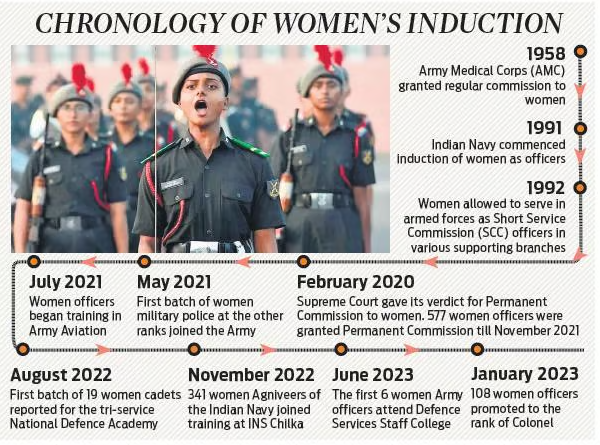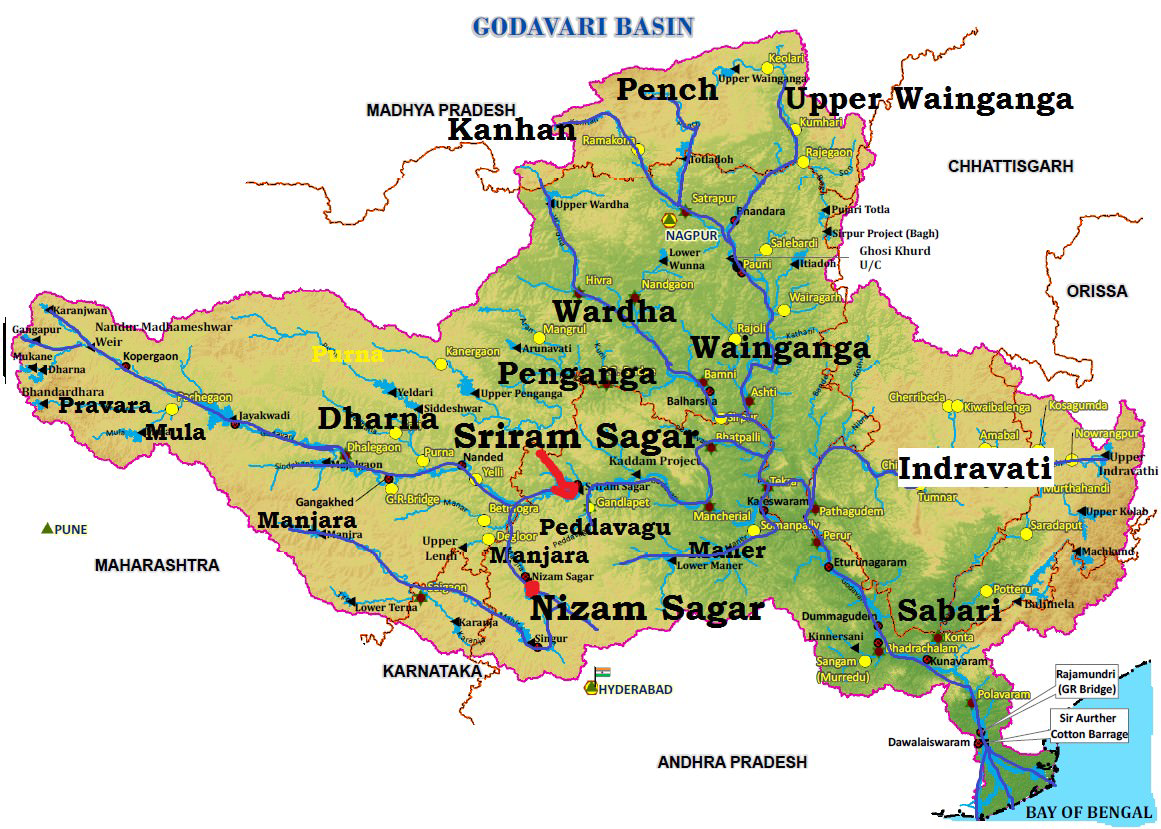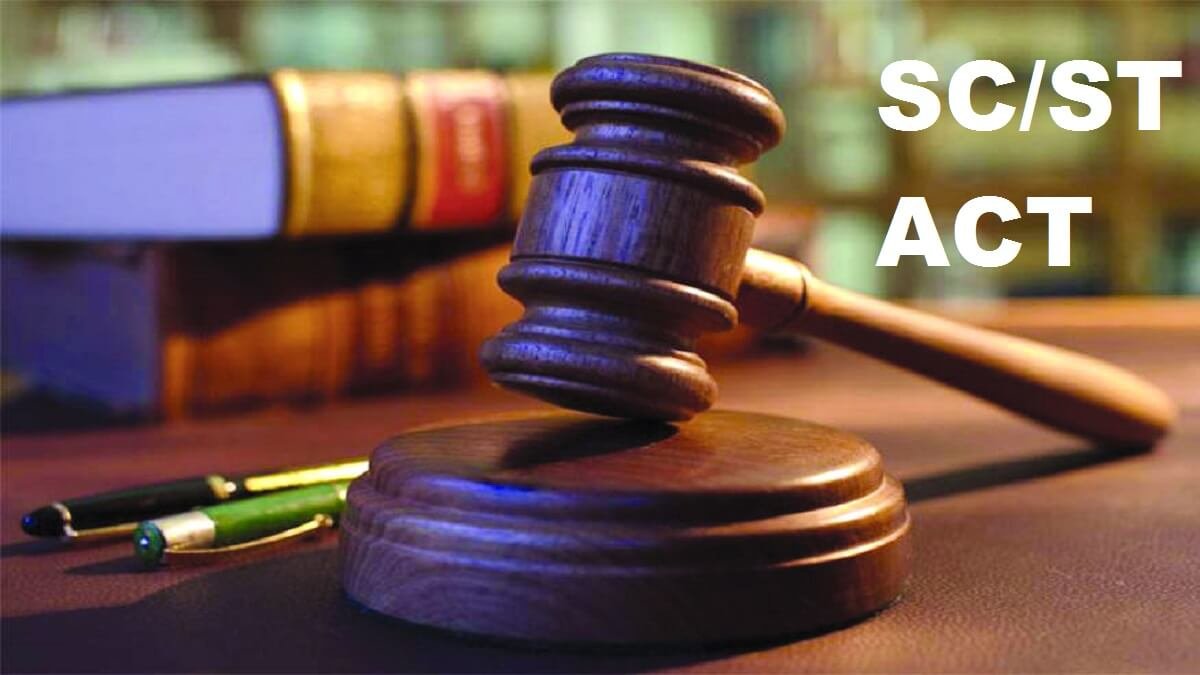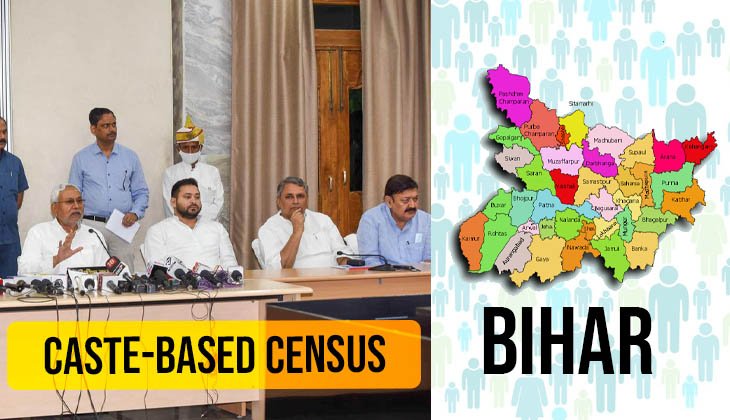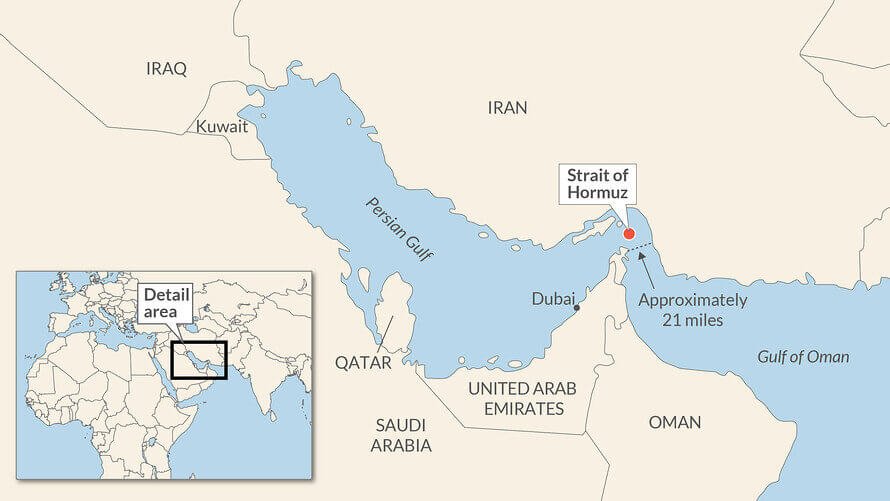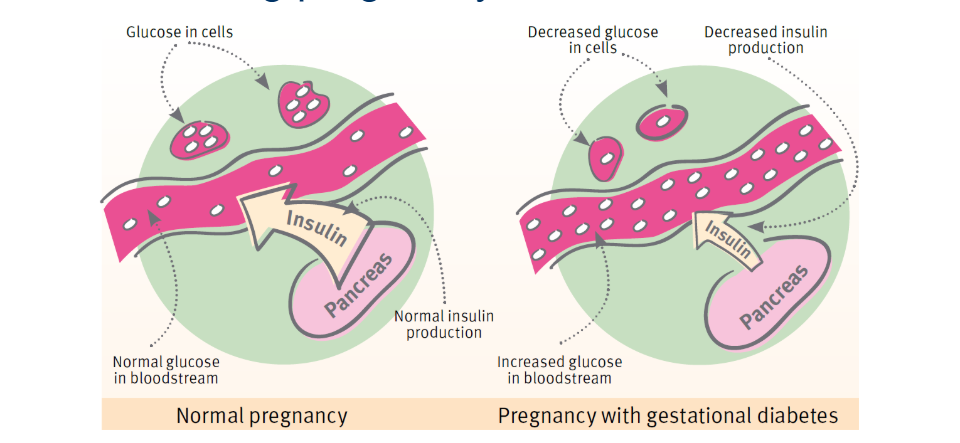
Current Affairs January 22, 2024: Maldives-China Relations, WTO’s Agreement on Agriculture, Hepatitis, Autonomous Cars, Wildlife (Protection) Licensing Rules, 2024, WEF Annual Meeting 2024
Subscribers of "Current Affairs" course can Download Daily Current Affairs in PDF/DOC
Subscribe to Never Miss an Important Update! Assured Discounts on New Products!
Must Join PMF IAS Telegram Channel & PMF IAS History Telegram Channel
{GS2 – IR – Institutions} WEF Annual Meeting 2024
- Context (IE): The World Economic Forum (WEF) concluded its Annual Meeting in Davos, Switzerland.
- The Davos summit remains relevant to see the reaction of developed nations to the most pressing issues.
- Theme: Rebuilding trust in an environment of rapid transformation.
Key takeaways

- Artificial Intelligence: Discussions on the positives and negatives of AI took place with a view that human intelligence does not face a significant threat from AI.
- War and uncertainty: Wars in the Middle East & Europe, threats to global supply chains, & uncertainty around food security were discussed, but without any peace solution to Israel-Palestine conflict.
- Climate: The sense of urgency and benefits of sustainable practices to handle the existential climate crisis was emphasised with the need for financial assistance from developed nations.
- US slowdown: It was discussed that the US slowdown could be avoided in 2024 with US Fed measures.
- China’s economy: China tried to attract more investment. At 5.2%, China’s GDP growth in 2023 is still below pre-pandemic levels, with battling American attempts to isolate it.
- India: The rise of India, one of the fastest-growing economies, was the second most discussed theme.
Global Good Alliance for Gender Equity and Equality
|
{GS2 – IR – Laws} Apostille Convention
- Context (LiveLaw): The Allahabad High Court held that the Union Government is bound by the Hague Apostille Convention as India is a signatory to the same.
- The Hague Convention Abolishing the Requirement of Legalisation for Foreign Public Documents, known as Apostille Convention, was concluded in 1961 and entered into force in 1965.
- It is an international treaty facilitating the circulation of public documents executed by one Contracting Party and which have to be produced in another.
- The purpose of the Convention is to replace the complicated and expensive legalization process of chain certification, with the mere issuance of a single Apostille certificate.
- The scope of the Convention covers only public documents, with the law of the State of origin of the document determining the public nature of documents.
- Article 1 of the Convention specifies what are deemed public documents for purposes of the Convention. These are court documents, administrative documents, notarial acts, and “official certificates which are placed on documents signed by persons in their private capacity.”
- The Apostille does not certify the quality of the content in the apostillized public document.
- Instead, it certifies only the authenticity of the signature, the capacity in which the person signing the document has acted, and the identity of the seal or stamp that the document bears.
- India, since 2005, is a member of the Hague Convention.
- The Ministry of External Affairs is the nodal ministry for consular legalization, or attesting/apostilling documents for use in India and abroad.
{GS2 – IR – Maldives} Maldives and Lakshadweep
- Tourism contributes 30% to the Maldivian economy with 60% of foreign currency earnings.
Maldives: A success story
- Early start: It was started in 1972 with the development of 60 tourist beds.
- Maldives tourism master plan 1996-2005 emphasised tourism as an essential economic activity.
- Connectivity: With more than 40 carriers serving the countries, it is well connected to the world.
- Visa-free travel to significant tourist inflow, including China, India, and Russia.
- Infrastructure: With 180 resorts, 15 hotels, 811 guesthouses, and 140 safari vessels offering a total of more than 62,000 beds, it boasts excellent infrastructure capabilities.
- Local hospitality: Homestays with the 2009 amendment allowing tourists to stay with local populations improved hospitality.
Lakshadweep
Tourism Attractions
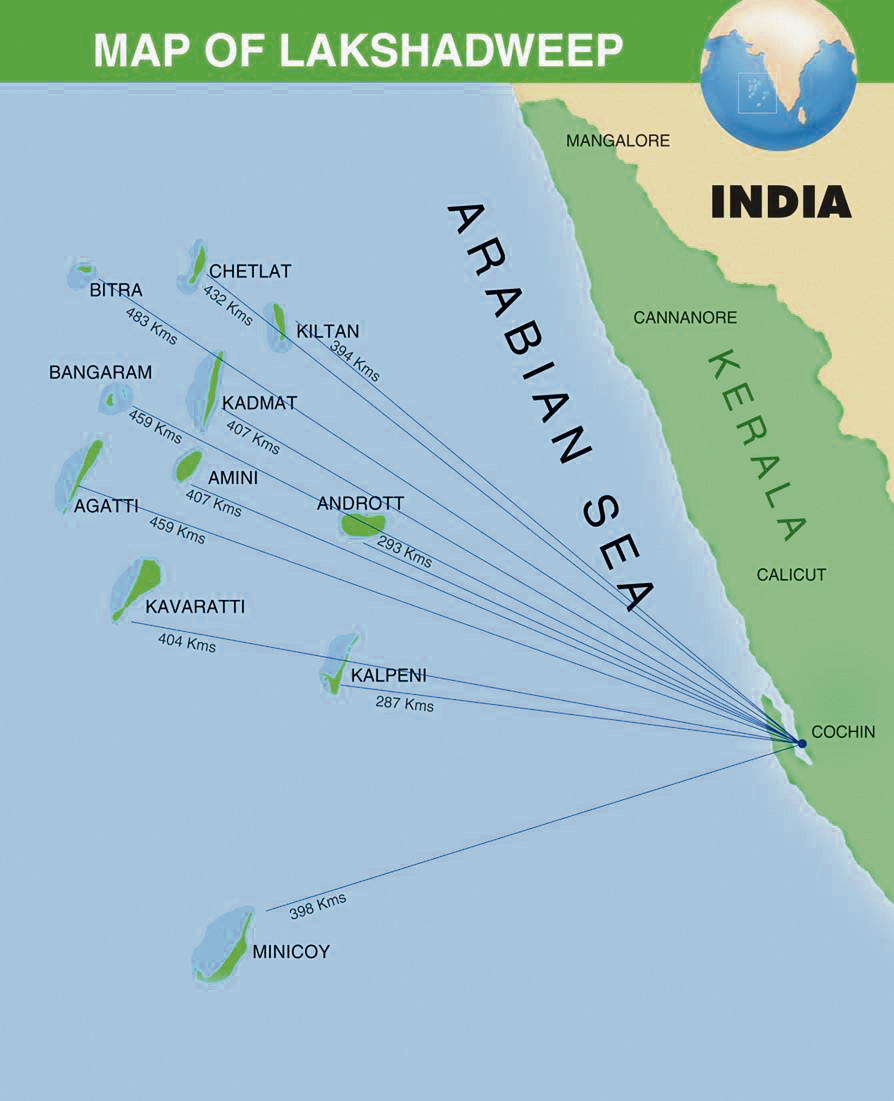
| Place | Significance |
| Agatti | Agatti Airport, Lagoon |
| Bangaram | Tourist resorts, Bangaram hut |
| Kavaratti | Administrative headquarters, Most developed, Lighthouse |
| Kadmath | Beautiful shallow waters, Water sports |
| Minicoy | Folk culture and folk dances, Isolated from the leading group |
| Kalpeni, Tilakkam, Pitti, and Cheriyam | Folk dances |
Limitations
-
Smaller area
- It occupies a smaller area with only ten islands inhabited, with a lack of capacity to cater to a “large influx of tourists”. For example, Bangaram and Kavaratti each have a capacity of about 200 cottages.
-
Environmental concerns
- The fragile ecology and the need for the conservation of the corals, lagoons and other ecosystems limits the construction.
- Justice R V Raveendran (retd) Panel suggested that infrastructure development proposals should be in accordance with an Integrated Island Management Plan in consultation with elected local self-government bodies.
-
Lack of investments
- India has lacked investment in its tourism potential due to concerns about locals and the environment.
-
Connectivity issue
- With only one aircraft between Kochi and Agatti, few operational ferries Lakshadweep lacks robust connectivity.
Entry restrictions
- With a Lakshadweep Administration permit and police clearance certificate, entry is very restricted for Lakshadweep.
Steps taken for Lakshadweep tourism
- Lakshadweep Tourism Policy 2020 allowed the PPP model, but follow-up to the policy did not occur.
- Infrastructure through Paradise Island huts (Being managed by Govt. led SPORTS -Society for Promotion of Nature Tourism and Sports) and a 90-room hotel by SMART city initiative are being launched.
- Other initiatives were also launched during the PM’s visit to Lakshadweep.
For details on Lakshadweep, visit Lakshadweep.
{GS2 – IR – Maldives} Maldives-China Relations: History and Recent visit
- Context (IE): Maldives-China relations will significantly impact the region’s geopolitics.
China-Maldives ties: History
- Traditional ties of China-Maldives go back to the Tang dynasty (7th century AD) and the Silk Road.
- Famous Ming dynasty Chinese navigator Zheng He also visited Maldives twice in 1412 and 1430.
- Maldivian King Yusof also sent envoys to China on three occasions around 1417.
- Contemporary diplomatic relations between China and Maldives were established only in 1972.
- Economic and trade ties between the two countries began in 1981.
- Future-oriented comprehensive relationship was signed in 2014 during Xi Jinping’s visit to Maldives.
- Maldives was among the first South Asian countries to the Belt & Road Initiative (BRI).
Chinese commentaries on the recent visit
- President of Maldives, Muizzu, was on a state visit to China to celebrate the 10th anniversary of Xi Jinping’s visit to Maldives.
- For the first time, a Maldivian President has chosen China for his first overseas visit instead of India.
- The “Comprehensive, friendly cooperative partnership” has been elevated to “Comprehensive strategic cooperative partnership” between both countries.
- It is seen as a signal that the Maldives’ president wants to strengthen bilateral and multilateral cooperation between the two countries.
- India is blamed for having “undue concerns” and “unease” regarding Muizzu’s China visit.
- Chinese media has alleged India’s “hegemonic neighbourhood first” policy in the sub-continent, with New Delhi “always suspicious” of Beijing’s “growing economic and friendly cooperation”.
- They have dismissed accusations of Beijing indulging in a “zero-sum game”.
Role of the US
- The strategic location of Maldives and deepening rivalry with China have prompted the engagement with Malé.
- The US announced the opening of its embassy in October 2020.
- Framework on the Defense and Security Relationship was signed 2020 between the USA and the Maldives 2020.
For details on India-Maldives relations, visit >India-Maldives Relations.
{GS2 – MoYAS – Schemes} Khelo India Programme
- Context (PIB): PM inaugurated the 6th edition of Khelo India Youth Games in Chennai.
- Khelo India Youth Games is a Pan India Sports Scholarship scheme covering the 1000 most deserving and talented athletes across the sports discipline, every year.
- It is a Central Sector Scheme.
- Nodal Ministry: Ministry of Youth Affairs and Sports
- It subsumed the following schemes:
- Rajiv Gandhi Khel Abhiyan (RGKA),
- Urban Sports Infrastructure Scheme (USIS)
- National Sports Talent Search Scheme (NSTSS).
- Eligibility criteria under the scheme:
- Candidates below the age of 17 can participate in under-17 category.
- Candidates below the age of 21 can participate in the under-21 category.
- Objective: Revive sports culture in India at the grassroots level by building a strong framework for all sports played in our country and establish India as a great sporting nation.
- Coverage: It will cover around 200 million children in the age group of 10-18 years.
- Scholarship: Young talent identified across the country by scouts are provided financial assistance of Rs 5 lakh per annum for 8 years.
Who is a Youth?
|
{GS2 – Social Sector – Health – Diseases} Hepatitis
- Context (TH): Indian Immunologicals (IIL) launched the country’s first indigenously developed Hepatitis A vaccine, ‘Havisure’.
Hepatitis
- Hepatitis is an inflammation of the liver.
- The condition can be self-limiting or can progress to chronic hepatitis, which can lead to progressive scarring of the liver (cirrhosis) or liver cancer.
- Causes: Hepatitis viruses are the most common cause of hepatitis. Toxic substances (e.g. alcohol, certain drugs), and autoimmune diseases can also cause hepatitis.
- Symptoms: Acute infection may occur with limited or no symptoms or may include symptoms such as jaundice (yellowing of skin and eyes), dark urine, extreme fatigue, nausea, vomiting, and abdominal pain.
5 Types of Hepatitis Virus
Hepatitis A Virus (HAV)
- It is the most common type of viral hepatitis.
- Causes: It is generally seen in the areas where sanitation and sewage disposal are poor. It is usually a short-term (acute) infection.
- Transmission: Commonly spread through faecal-oral route (ingestion of contaminated food and water). Certain sex practices can also spread HAV.
- Treatment: There is no specific treatment other than using medication. Vaccines are available to prevent HAV.
Hepatitis B Virus (HBV)
- Transmission
- Through exposure to infective blood, semen, and other body fluids.
- From infected mothers to infants at the time of birth
- Through contaminated injections during medical procedures, & through injection drug use.
- Prevention: Safe and effective vaccines are available to prevent HBV.
Hepatitis C Virus (HCV)
- Transmission: Through exposure to infective blood during transfusions of HCV-contaminated blood and blood products, contaminated injections during medical procedures, and through injection drug use. Sexual transmission is also possible but is much less common.
- There is no vaccine for HCV.
Hepatitis D Virus (HDV)
- It occurs only in those who are infected with HBV.
- The dual infection of HDV and HBV can result in a more serious disease and worse outcome.
- Prevention: Hepatitis B vaccines protect from HDV infection.
Hepatitis E Virus (HEV)
- Transmission is mostly through the consumption of contaminated water or food.
- Prevention: Safe and effective vaccines to prevent HEV infection have been developed but are not widely available.
Quick Facts
|
{GS2 – Social Sector – Health – Issues} Antibiotic Resistance
- Context (TH): The recent government survey data on antibiotic usage and resistance in India is a cause for concern.
Concerns for India
- The data shows a significant number of inpatients in Indian hospitals receiving multiple antibiotics.
- Approximately 55% of these prescriptions fall within the “Watch” group category, according to the WHO’s AWaRe classification.
- The WHO’s AWaRe classification includes “Access,” “Watch,” and “Reserve” groups based on their impact on antimicrobial resistance.
- The “Access” group is recommended for widespread use to minimise resistance.
- The “Watch” group is for limited and specific use.
- The “Reserve” group is reserved for life-threatening conditions.
- Third generation cephalosporins, like ceftriaxone, face the highest resistance in India.
- Developed countries like Norway, Finland, Netherlands, and the U.K. show low antibiotic resistance due to responsible antibiotic usage.
- In contrast, India, along with Russia, Egypt, and Pakistan, faces high antibiotic resistance.
- WHO recommends that 60% of country’s antibiotic consumption should be from “Access” group.
- In India, there is concern as 59% of total antibiotic consumption in 2022 and 64% during the pandemic years came from the “Watch” group.
- This indicates a deviation from recommended guidelines and potential risks of increased antibiotic resistance.
For details on Antibiotic Resistance, visit > Antibiotic Resistance
{GS3 – Agri – Food Subsidy} WTO’s Agreement on Agriculture (AoA)
- Context (IE): India has urged the WTO to find a lasting solution to the matter of public stockholding for food security during the 13th Ministerial Conference (MC13).
- The MC13 will take place on February 26, 2024, in Abu Dhabi, United Arab Emirates.
- The Ministerial Conference is the highest decision-making body of the WTO.
- To gain a better understanding of the matter, it’s crucial to familiarize yourself with the WTO’s Agreement on Agriculture (AoA).
Agreement on Agriculture (AoA)
- AoA was negotiated during the Uruguay Round of trade talks (1986).
- It was formally ratified in 1994 at Marrakesh, Morocco and came into effect in 1995.
- The AoA aims to promote fair competition, reduce trade-distorting subsidies, and ensure market access for agricultural products.
- To achieve this, the AoA includes explicit commitments to decrease support and protection in domestic support, export subsidies, and increased market access.
- The most controversial of all these is the reduction in domestic food subsidies.
- This is also a great concern for India as it would directly affect the livelihoods of a large population.
- The agreement also considers non-trade concerns such as food security and environmental protection, offering special treatment for developing countries.
Three Pillars of the Agreement on Agriculture
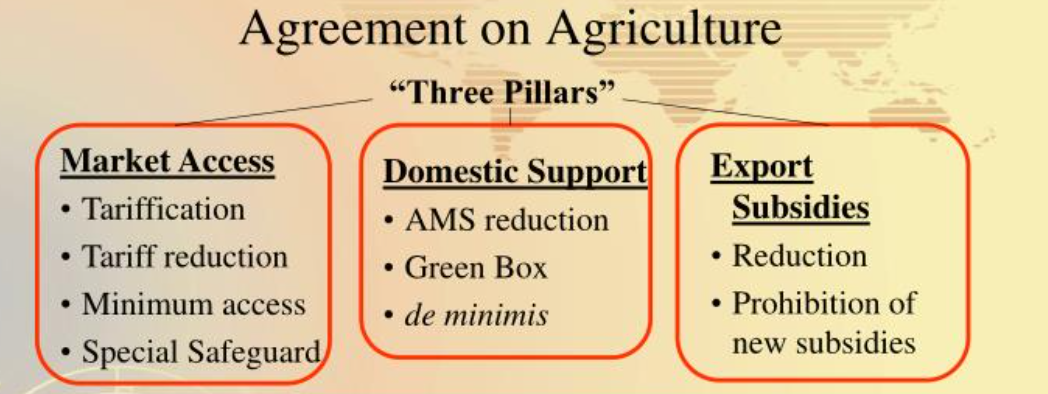
Market Access
- Market access commitments, outlined in Article 4 of the AoA, aim to eliminate and prevent future non-tariff barriers.
- The agreement emphasises tariffication, converting non-tariff barriers like quotas into tariffs.
|
- For tariff reduction, the following commitments must be implemented by the different countries.
- Developed countries must reduce total tariffs, including tariffication, by an average of 36 per cent over six years of implementation of the agreement.
- Developing countries need to reduce tariffs by an average of 24 percent over ten years of implementation of the agreement.
- Least developed countries have no commitments.
- Special treatment: Some developing countries, which are maintaining quantitative restrictions due to payment balance problems, were allowed to offer ceilings instead of tariffication.
Domestic support
- Domestic support commitment has been covered in Article 6 of the Agriculture Agreement.
- Domestic support refers to government subsidies such as Minimum Support Price (MSP)or Input subsidies, which are provided at the domestic level either directly or product-specific, or both.
- The AoA categorises domestic support measures into three boxes—green, blue, and amber based on their trade-distorting nature.
Green box
- Subsidies that do not distort trade or, at most, cause minimal distortion are in this box.
- Usually, these subsidies are not directed at specific products.
- There is no limit on governments for giving this kind of subsidies to their farmers.
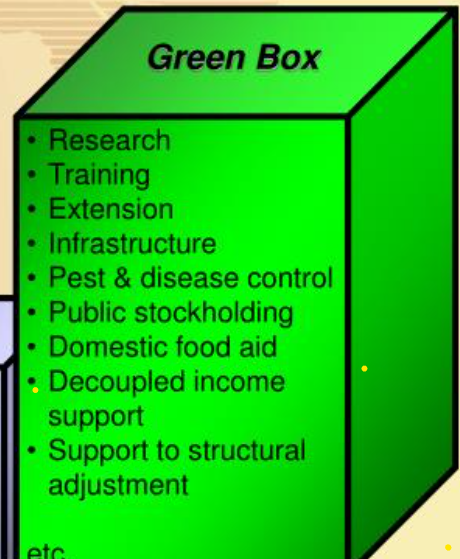
Amber Box
- The subsidies that distort international trade by making products of a particular country cheaper as compared to similar products from another country are slotted under this box.
- Example – Input subsidies such as subsidies on electricity, seeds, fertilisers, irrigation, etc. Market support price (MSP) subsidies also fall under this box.
- To measure ‘amber box’ support, WTO member countries are required to compute the aggregate measure of support (AMS).
- The AMS means the annual level of support (subsidies) expressed in monetary terms provided for an agricultural product. It includes both product-specific & non-product-specific support.
- The fixed external reference price is used to calculate the AMS to determine compliance with subsidy limits.
- The fixed external reference price shall be based on the years 1986 to 1988.
- WTO limits this subsidy by capping it at 5% for developed countries & 10% for developing countries of their total agriculture production. (de minimis).
India’s concern regarding Fixed external reference price
Peace Clause
|
Blue Box Subsidies
- According to the WTO, the Blue Box is the “amber box subsidy with conditions” attached.
- The Blue Box subsidies aim towards limiting production by imposing production quotas or requiring farmers to set aside part of their land.
- Blue Box subsidies are also exempted from the calculation of AMS.
Export subsidies
- Export subsidies commitment has been covered under Article 8 of the agricultural agreement.
- Member states are required to decrease the monetary expenditure on export subsidies
- Developing countries: to reduce the value of export subsidies by 36% and the quantity of subsidised Exports by 21% within six years of the implementation of the agreement.
- Developed countries: to reduce the value of export subsidies by 24% of and the quantity of subsidised Exports by 14% within ten years of the implementation of the agreement.
- Least developed countries do not have to comply with this provision.
- The agreement also mentions that the products that do not come under the subsidised export goods category cannot be included in the list in the future.
Special Safeguard Mechanism
- At the Doha Ministerial Conference, the developing countries were given a concession to adopt a Special Safeguard Mechanism (SSM) besides the existing safeguards (like the Special Agricultural Safeguard or the SSG).
- It allows developing countries to raise import duties on agricultural products in response to import surges.
- The SSG was available to all countries (both developing and developed), whereas the SSM is only allowable to developing countries.
Concern for India with respect to WTO’s AoA
- Issue of domestic support and subsidies.
- The AOA places limits on the support that a country can provide to its farmers.
- India’s extensive public procurement programs, such as the minimum support price (MSP) for various crops, have faced scrutiny under these rules.
- Concerns about the formula used for calculating the aggregate measurement of support (AMS).
- The outdated fixed external reference price, which has not been revised for several decades, creates challenges for India in maintaining its domestic support programs.
- The special safeguard mechanism (SSM) has limitations that may not fully address the concerns of vulnerable farmers.
- The AOA prevents India from using export subsidies since it has not used this instrument in the past. However, the agreement allows the advanced countries that were using export subsidies to continue using this instrument.
India’s Stand
- India rejects other proposed food security solutions beyond public stockholding (PSH) and special safeguard mechanisms (SSM).
- India has suggested the necessity of recalculating external reference prices to account for the influence of inflation and other economic factors on food stock prices.
- India, along with other countries (China, Lanka, South Africa, and Egypt), highlighted the importance of PSH being applied to all developing countries. Particularly least developed countries (LDCs) and net-food importing developing countries (NFIDCs), to help address the severe food security problem.
- India also wants amendments in the formula to calculate the food subsidy cap and inclusion of programmes implemented after 2013 under the ambit of the ‘Peace Clause’.
{GS3 – Envi – Laws} Wildlife (Protection) Licensing Rules, 2024
- Context (DTE): Wildlife (Protection) Licensing (Additional Matters for Consideration) Rules, 2024 were notified by MoEFCC.
- It aims to replace Wildlife (Protection) Licensing (Additional Matters for Consideration) Rules, 1983.
- It introduces fresh guidelines for licenses in snake venom, captive animals, trophy animals, and stuffed animals.
- The previous rules prohibit licences for Schedule I or Part II of Schedule II animals under the Wildlife Protection Act 1972. The licences were granted in exceptional cases with previous approval of the central government.
New guidelines vs Old guidelines
| Notification |
Rules |
Details |
| 1983 Rules | Prohibit licences for Schedule I and Part II of Schedule II |
|
| 2024 Rules | Prohibit licences for Schedule I only.
Can be provided if there is a prior consultation with the central government. |
|
Amendments to the Schedule in the Wildlife Protection Act 1972
- In 2022, the central government amended the Wildlife Protection Act 1972. It reduced the number of schedules from Six to Four now.
| Schedule |
Protection |
| Schedule I | Animal species that will enjoy the highest level of protection. |
| Schedule II | Animal species that will be subject to a lesser degree of protection |
| Schedule III | Protected Plant species |
| Schedule IV | Specimens listed in the Appendices under CITES (scheduled specimens) |
Key establishments under the Wildlife Protection Act Amendments 1972
|
For details on WPA, 2022, visit >Wildlife Protection (Amendment) Act, 2022
{GS3 – S&T – Tech} Autonomous Cars
- Context (IE): Autonomous cars find repetitive mention in the news.
Autonomous Cars
- A self-driving car (autonomous car or driverless car) is a vehicle that uses a combination of sensors and artificial intelligence (AI) to travel between destinations without a human operator.
Five levels in the evolution of autonomous driving
- Level 0: The driver controls the car without any support from a driver assistance system.
- Level 1: Adaptive lanes assist or parking assist.
- Level 2: Steering and lane-keeping assist and remote-controlled parking.
- Level 3: Driver can partly take his eyes off the road.
- Level 4: Stands for “Fully Automated Driving”, with no hands-on steering.
- Level 5: Fully Automated without any human input
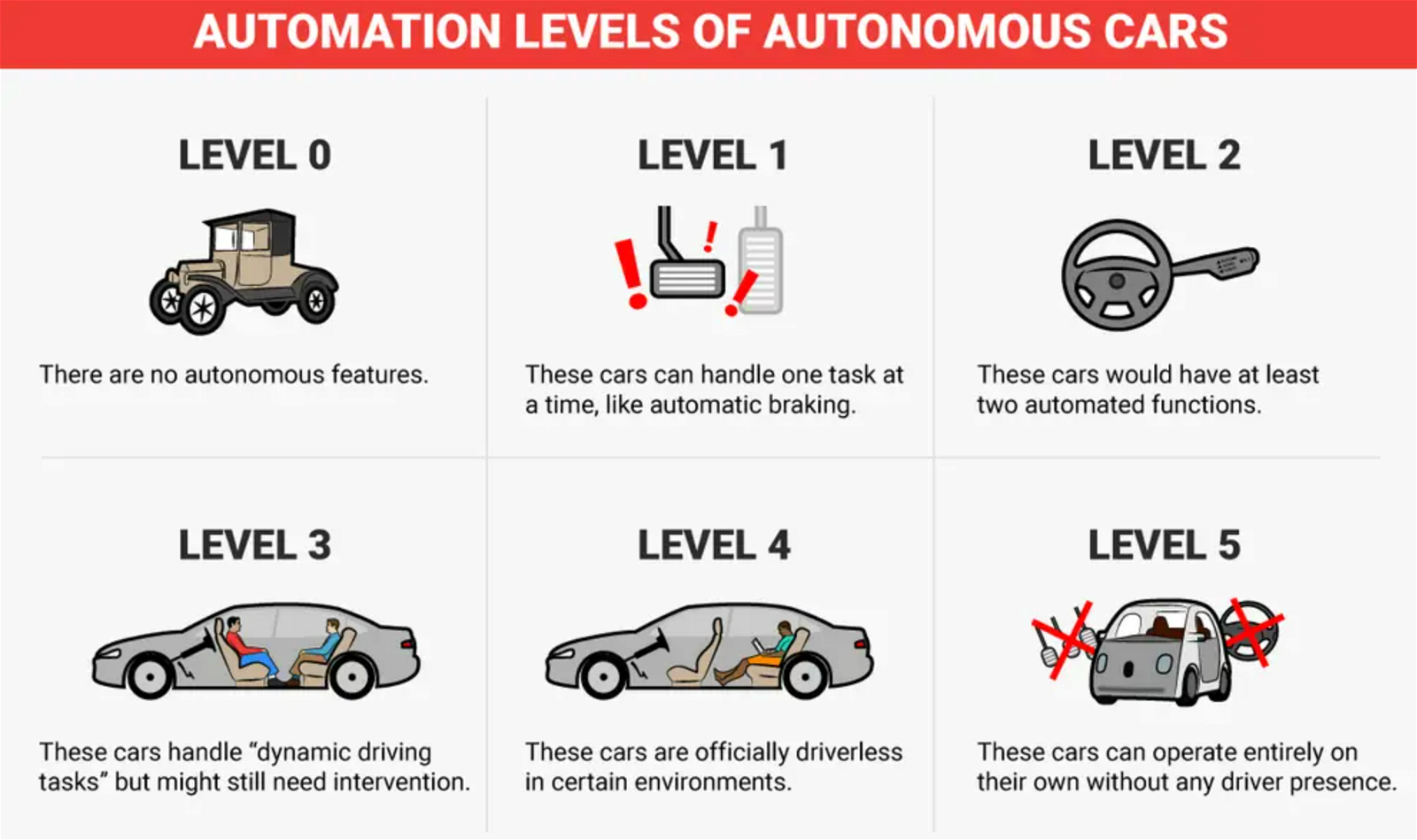
Advanced driver assistance systems (ADAS)
|
Benefits of Self-driving Cars
- Expected benefits of autonomous cars include a reduction in traffic congestion by elimination of human interventions.
- With no labour cost, transportation cost is expected to reduce by 40%.
- As a result, urban CO2 emissions may also be reduced worldwide.
Issues in Self-Driving Car Adoption
- Robotic output: Such cars are programmed robots with predetermined situations and solutions.
- Ethical and legal dilemma: With no human responsible for accidents by such cars, ethical and legal issues will come up.
- Discriminatory algorithms: Discriminatory algorithms are not uncommon and are expected to interfere with driving.
- Cybercrime vulnerability: As is the case with any other digital technology, self-driven cars are also prone to such attacks.
- Employment: Such systems are expected to raise issues of employability, especially for low-skill labour.
{Prelims – PIN} M.G. Ramachandran
- Context (PIB): Prime Minister Narendra Modi has honoured the birth anniversary of M.G. Ramachandran, a prominent figure in Tamil cinema and a former Chief Minister of Tamil Nadu.
About M.G. Ramachandran
- Marudur Gopalan Ramachandran was born on 17 January 1917 in Kandy, Sri Lanka.
- His parents are Melkath Gopala Menon and Maruthur Satya Bhama.
- He was popularly known as M. G. R.
- He was an Indian actor, filmmaker, and politician.
Acting career
- Ramachandran made his film debut in 1936 in the film Sathi Leelavathi.
- He was popularly known as “Makkal Thilagam“.
- He acted as a hero in the Tamil film industry’s first-ever Geva colour movie in 1955.
- MGR was the first popular film actor to be the Chief Minister of a state in India.
Political career
- MGR was a member of the Congress Party till 1953.
- In 1953, MGR joined the Dravida Munnetra Kazhagam (DMK), attracted by founder C.N. Annadurai.
- At the age of 50, he was first elected to the Tamil Nadu Legislative Assembly in 1967.
- After the death of his mentor, Annadurai, MGR became the treasurer of DMK in 1969 after Muthuvel Karunanidhi became the Chief Minister.
-
Split from DMK
- In 1972, MGR claimed that corruption had grown in the party after the demise of Annadurai and asked for the party’s financial details to be publicised. Consequently, MGR was expelled from the party.
- Upon his ouster from DMK, Ramachandran floated a new party, which he called Anna Dravida Munnetra Kazhagam (ADMK) 1972, on October 17.
- The AIADMK contested the 1977 assembly elections in Tamil Nadu and won 144 seats out of 234, and MGR became the Chief Minister of Tamil Nadu.
- He served as the Chief Minister of Tamil Nadu for ten years between 1977 and 1987.
- He became the first leader since K. Kamaraj to be re-elected as Chief Minister.
Achievements during his tenure
- The conversion of the “Midday Meal Scheme“, introduced by K Kamaraj, into “MGR’s Nutritious Meal Scheme.”
- Introduced Women’s Special buses.
- A liquor ban was introduced in the state in 1987.
- Introduced 30% job reservation for women.
- He introduced Free power for irrigation in 1983.
- The Government of Tamil Nadu established the Anna University of Technology.
- In Madurai, the 5th World Tamil Conference was organised by MGR in 1981.
- In education he introduced 10+2+3 system in 1978.
- In 1983, Madras Atomic Power Station’s first unit was commissioned at Kalpakkam.




![PMF IAS Environment for UPSC 2022-23 [paperback] PMF IAS [Nov 30, 2021]…](https://pmfias.b-cdn.net/wp-content/uploads/2024/04/pmfiasenvironmentforupsc2022-23paperbackpmfiasnov302021.jpg)


